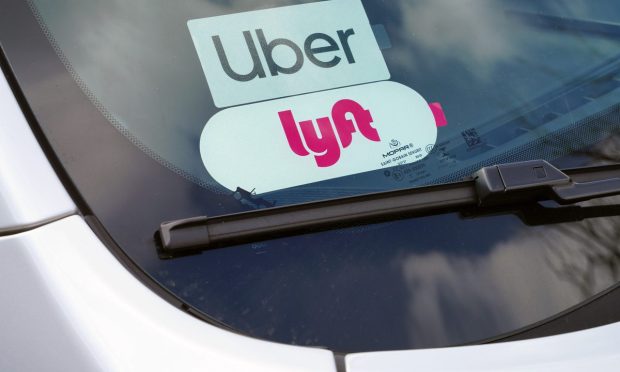Uber And Lyft’s Strategies Diverge To Ride Economic Recoveries

Investing for growth is a strategy that pays dividends — eventually. Maybe.
But once the cash is spent, once the dollars allocated toward marketing, product development — you name it — what comes as return on investment, especially for the ride-hailing companies, might be less than appetizing, at least for Wall Street.
Earnings season has trained a spotlight on the ongoing and at times bumpy (depending on where you look) recovery. For Uber and Lyft, at this writing, shares are up in the mid to high single-digit percentages, after slumping roughly the same amount, in the wake of their respective earnings reports. Based on that math, then, there’s been a significant retracement of losses. But it’s important to look under the hood and see what’s powering results, and two divergent strategies.
In terms of those divergent strategies, in a nutshell, Lyft is putting its eggs in the ride-hailing basket, while Uber’s strategy skews toward continuing to broaden its platform, adding on ancillary services in a bid to create what might be viewed as a “super app,” where the digital front door provides a gateway for users to conduct a continuum of daily financial life and daily tasks.
Lyft’s pure play bet is reflected in the numbers, where its active ridership has yet to reach pre-pandemic levels.
In a data point: Uber has been EBITDA negative (EBITDA, or earnings before interest, taxes, depreciation and amortization, is a rough measure of cash flow), to $509 million. Lyft was EBITDA positive, to $23.8 million.
As noted in this space, we saw a big bounce from the depths of the pandemic last year, when Lyft’s active riders increased by over 3.6 million from the prior quarter, which led year-over-year revenue for this quarter to come out 125 percent higher, and up 27 percent from the previous quarter, to the most recent reading of 17.1 million. Lyft reported revenue of $765 million for Q2 this year. That was also an increase from $609 million in the first quarter of 2021. But the ridership metric was 21 percent lower than had been seen in 2019.
See also: Lyft Adds 3.6 Million Active Riders In Q2
Uber, by way of contrast, said that its own count, as compared to two years ago, saw its monthly active platform consumers (MAPCs) stood at 101 million, up from 55 million at 2020. The company said that aggregate gross bookings are 30 percent higher, as measured in July of this year are 30 percent higher than those levels seen in the same month in July 2019.
The cross-platform consumer acquisition strategy, said Uber, has been paying dividends, as the mobility and delivery segments have boosted results. For example, mobility gross bookings were up 184 percent to $8.6 billion; delivery gross bookings were up 85 percent from last year to $12.9 billion. Delivery, in particular, had a revenue contribution of nearly $2 billion, and total revenues of $3.9 billion were a bit better than the Street at $3.8 billion. And in illustration of the cross-pollination, Uber said in its supplementals that the “super app is a powerful consumer acquisition funnel” for delivery: in the U.S. alone, 22 percent of first-time delivery orders originated from the Ride app in July, which compares to 14 percent at the beginning of 2020. Similarly, 20 percent of first-time mobility trips came from existing delivery consumers.
In a nod to Lyft’s own entrenched position in ride-hailing, Uber’s numbers illustrate the snapback and the seismic shift that is occurring. The company has said that an increasing number of consumers continue to prefer ridesharing (a basket that of course includes Lyft) to other modes of transportation.
Along the way, as is necessary, Uber is investing in its fleet (as is Lyft, in preparing for the continued upturn). For Uber, the U.S. tally has increased by 420,000 from February through July. “The investments were big, but the investments were well worth it and we’re on the positive side of the ledger, so to speak,” CEO Dara Khosrowshahi said on the earnings call. Lyft’s own driver count was up 60 percent year on year, CEO Logan Green said on Lyft’s earnings call. As Green said during the Q and A: “Just remember the gig economy rideshare tends to be king … we believe the earning opportunity are greater in rideshare.”
Two companies, two paths to ride the economic recovery — and the fruits of their labor will be borne out in the numbers.